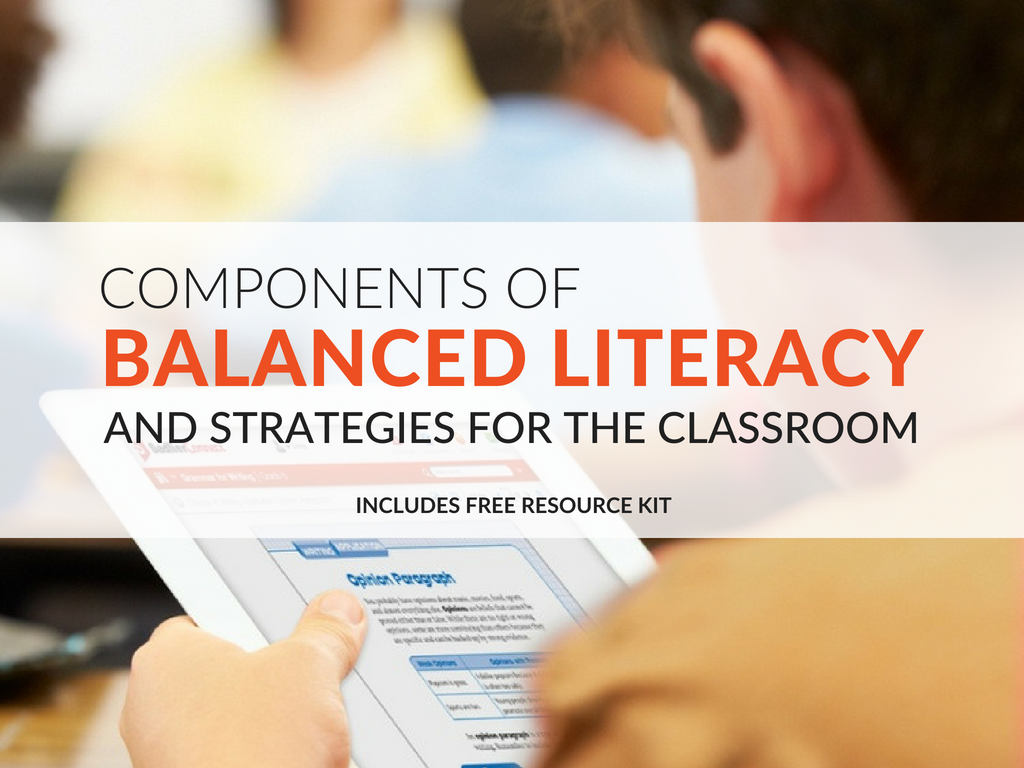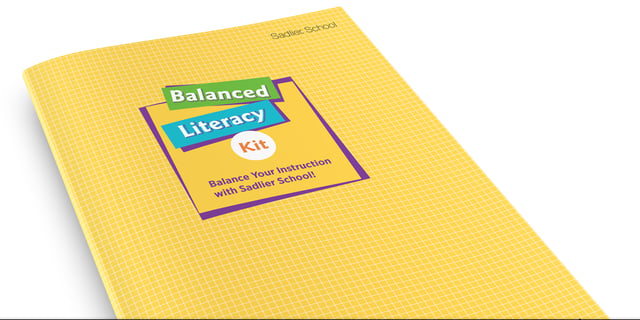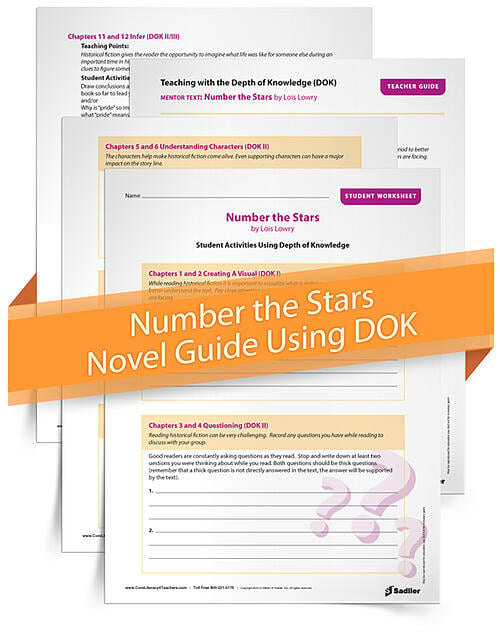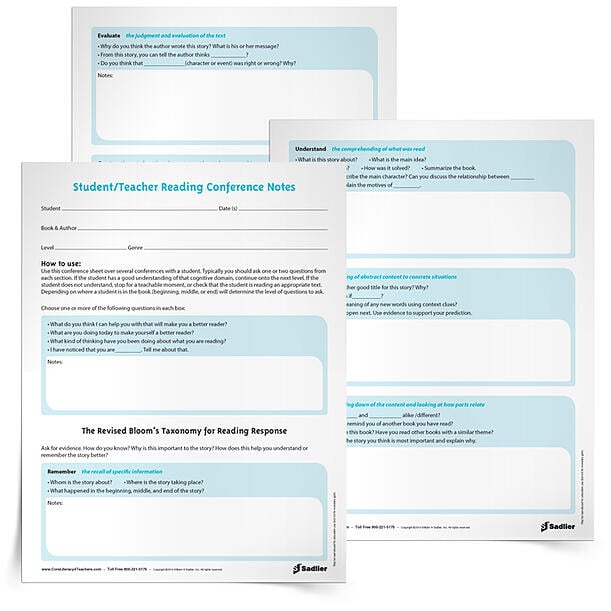July 13, 2018 CL Teaching Strategies DOK & Bloom's, CL Teaching Strategies Charts & Org, ELA PD - Literacy, ELA K-5, ELA Focus - Reading, ELA 6-8, ELA Resources - Tip Sheets, ELA PD - Leadership, Core Literacy
Components of Balanced Literacy and Strategies for the Classroom
By: Erin Lynch
The methodology that I use to teach reading is "Balanced Literacy." Many of my blog posts refer to "Balanced Literacy" as I share units, lessons, and activities.
Balanced Literacy is a curricular methodology that integrates various modalities of literacy instruction, which are aimed at guiding students towards proficient and lifelong reading. The balanced literacy approach is characterized by explicit skill instruction and by the use of authentic texts.
Download a FREE Balanced Literacy Kit now.
COMPONENTS OF BALANCED LITERACY AND STRATEGIES*
Below is a synopsis of each of the components of "Balanced Literacy," for those who are unfamiliar with this literacy instructional approach.
METHOD 1: READ ALOUDS
-
An interactive experience in which readers are engaged in discussing a text throughout the reading
-
Develops high-level thinking and discourse
-
An opportunity to deepen comprehension through discourse and active thinking
-
Using cognitive resources that actively engage students in thinking about the text, such as the DOK and Bloom's levels will increase rigor and raise the caliber of conversation
-
Students are reading a common text with teacher support
-
The text is re-read over the course of several days with various teaching points in mind
-
Fluency is a key goal of this component ultimately leading to higher levels of comprehension
METHOD 3: READING MINI-LESSON
-
Direct and explicit instruction
-
About 10 minutes in length
-
Clear and consistent structure
-
Connection
-
Teach
-
Try/Active Engagement
-
Link
-
Drawn from a unit of study or a class need
-
Refers to a text for instructional clarity such as a read-aloud or shared reading
METHOD 4: INDEPENDENT READING
-
Students are reading a “Just-Right” book of their choice
-
Students are practicing reading strategies taught in the mini-lesson
METHOD 5: CONFERRING
-
The teacher meets with students individually in order to discuss and document specific needs and the progress of the individual reader
-
The teacher may review a skill or strategy from a previous conference or may set a new goal with the student
-
Conferences with students can be based on formal (pre-and post-assessments) and informal (observations & reader's response journal) data
-
Questions during a conference can be focused on the data collected, or can be used as a means to decide what levels the individual still needs work on
-
Goals around the levels can be set with the student
-
Format: research >> decide >> teach
METHOD 6: SMALL GROUP WORK
-
Guided Reading: One type of small-group differentiated instruction designed to help individual students learn how to process a variety of increasingly challenging texts with understanding and fluency
-
This small group of students is at the same or similar instructional reading level based on a variety of informal and formal assessments
-
Strategy Instruction: Another type of small group differentiated instruction that brings readers together who are not necessarily on the same instructional level, yet these children have demonstrated a common “strategy” need, which is identified by the teacher
METHOD 7: ASSESSMENT
-
Formative assessments are assessments FOR learning
-
Journaling, conferring, observation, self-assessment, portfolios, and so on
-
Summative assessments are assessments OF learning
-
Unit assessments, standardized assessments, portfolios, and so on
See what more and more classrooms across the country are doing to integrate various literacy instruction and guide students toward proficient and lifelong reading. Set up your balanced literacy classroom with the Balanced Literacy Kit!
PAIRING DEPTH OF KNOWLEDGE AND BLOOM’S TAXONOMY WITH BALANCED LITERACY
I encourage all of the literacy specialists and ELA teachers I work with to use the Revised Bloom’s Taxonomy and the Webb’s Depth of Knowledge (DOK) when planning lessons and activities. This ensures lessons are rigorous and tap higher-order thinking skills.
The Revised Bloom's Taxonomy and Webb's Depth of Knowledge also support Balanced Literacy objectives. If you are not familiar with Webb’s Depth of Knowledge and The Revised Bloom’s Taxonomy, you can read a summary of each, and a comparison of the two here.
When planning out lessons and various activities that support Balanced Literacy, one of my favorite resources to reference is the DOK and Bloom’s Cheat Sheet. This breakdown simplifies the DOK and Bloom’s learning objectives.
Depth of Knowledge and Bloom's Taxonomy Cheat Sheet
-
Bloom's Taxonomy: focuses on the tasks that students complete in order to deepen student understanding
-
Webb's DOK: focuses on the thinking process, not just the product; it is about the cognitive demands of instruction, activities or assessments; it extends beyond the verb, beyond the "what" to the "how" in order to expand student learning; it is the thinking required not if the task is difficult
The level of complexity does not necessarily increase as you move through Bloom’s, but the thinking required should "extend" as you reach the higher levels of the DOK.
Here’s an example of "extended thinking" using the DOK:
Nonfiction Reading Utilizing the DOK
-
DOK 1: Students list a set of questions around a topic they would like to research the answers to
-
DOK 2: Students research the topic and collect information from multiple media sources. Students explain the information learned to their peers
-
DOK 3: Students draw conclusions about the topic researched. Students expand their thinking through discussion
-
DOK 4: Students decide the best way to present the information learned in order to show an in-depth understanding
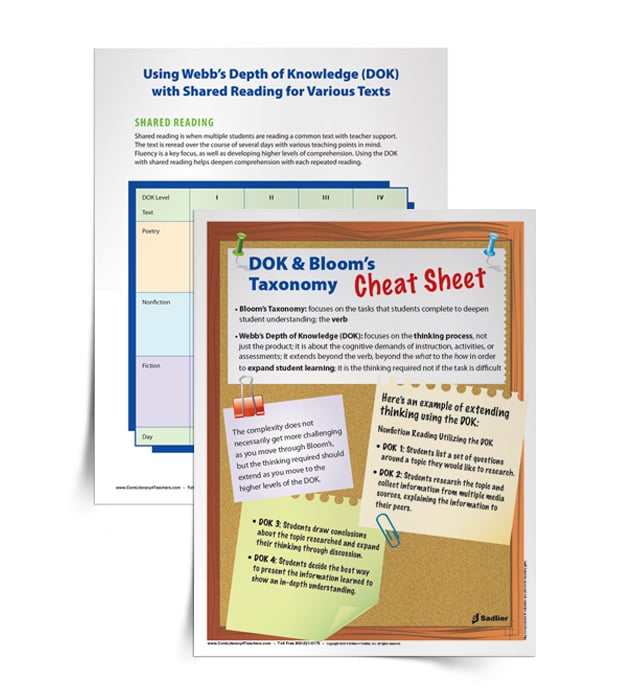
WAYS TO SUPPORT COMPONENTS OF BALANCED LITERACY
USING WEBB’S DOK WITH SHARED READING (METHOD 2)
Shared reading is when students are reading a common text with teacher support. The text is re-read over the course of several days with various teaching points in mind. Fluency is a key focus, as well as, developing higher levels of comprehension.
Using the DOK with shared reading helps to support students' deepening of comprehension with each repeated reading. Download the Shared Reading chart!
USING WEBB’S DOK AND BLOOM’S TAXONOMY WITH GUIDED GROUPS, STRATEGY GROUPS, AND READING UNITS (METHOD 3, METHOD 6)
The Revised Bloom's Taxonomy and DOK questions can be used as guiding questions for a comprehension check with your guided groups and strategy groups. The questions can be asked orally or in written format, and works with both short and long texts.
Questioning strategies can also be incorporated into almost any reading unit. Many of my unit read alouds’ mentor texts are accompanied with questions that are based on the DOK and Revised Bloom's Taxonomy.
A unit can be specifically developed around questioning and accountable talk (some of my literacy units focus on just the DOK, or only the Revised Bloom's Taxonomy, as well as, a combination of both). Small group work within a unit can focus on questioning and accountable talk.
Use the Revised Bloom’s Taxonomy Ladder and Webb’s Depth of Knowledge Level Chart to:
-
Incorporate each level of reasoning skills with categorized verbs
-
Include various levels of complexity with DOK stem questions
-
Assess your students' depth of knowledge
-
Efficiently align objectives to the CCSS
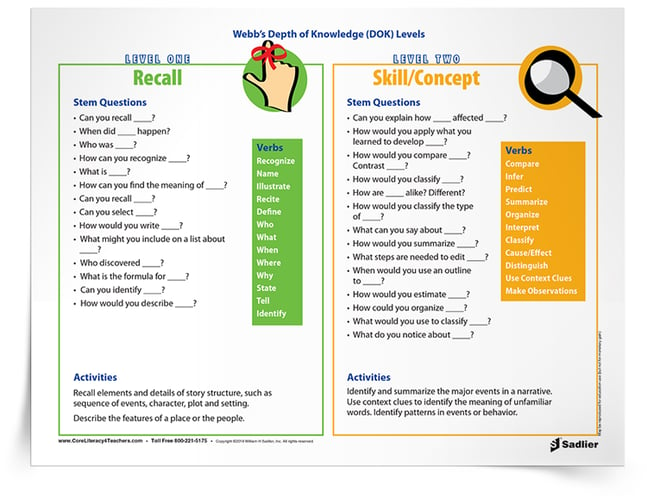
Below is an example of using Webb’s DOK with the book Number the Stars by Lois Lowry, which provides possible teaching points and student reading activities that are open-ended, without specifics on how to use them.
I did this because, as a teacher, you might use these differently, based on your students' level and needs. I like to print both out for my students, but most teachers will just weave them into their instruction. If you are like me and want to print the lesson out, download the print-ready teacher guide and student worksheets!
USING THE REVISED BLOOM’S TAXONOMY DURING CONFERRING & ASSESMENT (METHOD 5, METHOD 7)
Finally, the DOK and Revised Bloom’s Taxonomy can support balanced literacy when conferring with students and assessing reading skills.
Student conferences provide a unique experience for teachers to meet with individual students to see how they are employing effective reading comprehension strategies. Through the gradual release of responsibility, the goal is to guide students to become more thoughtful and independent readers.
While conferencing with students, use the Revised Bloom's Taxonomy Reading Conference Forms to incorporate a variety of questions based on the Revised Bloom's Taxonomy: Remember, Understand, Apply, Analyze, Evaluate and Create.
Please note that I use that conference sheet over the course of several conferences with a student. I usually only ask one or two questions from each section. If the student has a good understanding of that cognitive domain, I continue to the next level. If the student does not understand, I stop for a teachable moment or to check that the student is reading an appropriate text.
IN SUMMARY
Guide students towards proficient and lifelong reading using the Balanced Literacy methodology. The Balanced Literacy approach is characterized by explicit skill instruction and by the use of authentic texts.
Educators can also use the Revised Bloom’s Taxonomy and Webb’s Depth of Knowledge in order to support the various components of Balanced Literacy.



